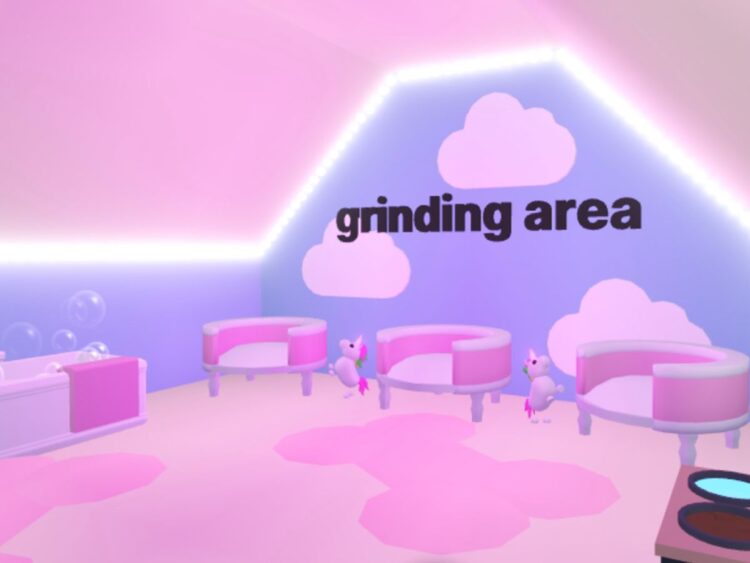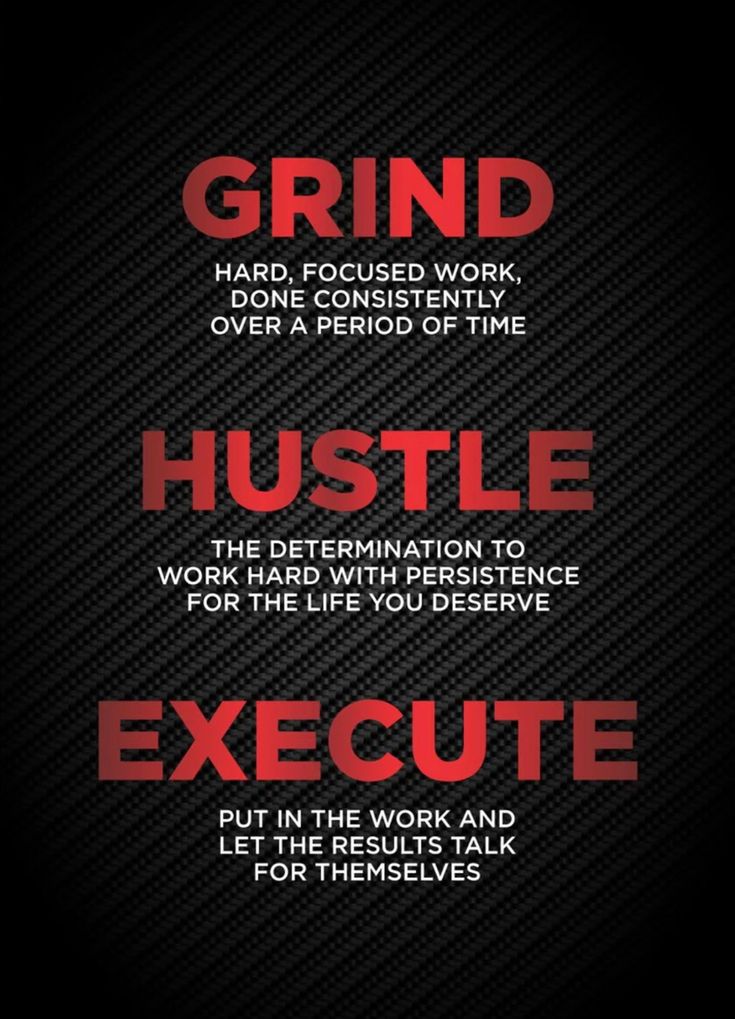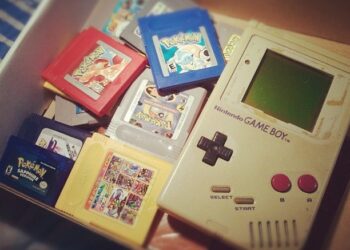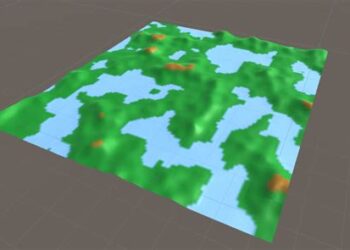Introduction: The Compulsion to Grind
The term “grinding” in video games refers to the act of performing repetitive tasks to achieve an in-game goal, such as acquiring experience points (XP), currency, or rare loot. From slaying the same monsters for hours in an MMORPG (Massively Multiplayer Online Role-Playing Game) to replaying simple levels in a mobile game, this behavior is a cornerstone of game design, yet it often defies conventional logic. Why would millions of players willingly commit their valuable time to what often feels like digital busywork?
The answer lies deep within human psychology and the meticulously crafted systems of modern game design. Understanding the ‘why’ behind the grind is not just for game developers; it’s essential for players who want to manage their time better and for content creators aiming to capitalize on the high-intent search traffic surrounding player motivation, efficiency, and game longevity—topics that attract high CPC (Cost Per Click) from advertisers in the gaming and self-improvement niches.
This extensive analysis will dissect the mechanics, psychological triggers, and social dynamics that turn a tedious chore into a powerful, profitable, and persistent player behavior. We will explore the reward systems, the cognitive biases exploited by designers, and the very real neurochemical reactions that keep players coming back for just one more run.
I. The Core Pillars of Grinding Motivation
To truly grasp the psychology of the grind, we must first examine the fundamental psychological principles that game designers harness. These principles transform monotonous repetition into a compelling, goal-oriented activity.
A. Operant Conditioning and Variable-Ratio Schedules
The most powerful psychological mechanism at play is operant conditioning, a concept pioneered by behavioral psychologist B.F. Skinner. This involves learning through rewards and punishments. In gaming, the reward system is paramount. Specifically, the grind often employs a variable-ratio reinforcement schedule.
- Fixed-Ratio Schedules: The reward comes after a fixed number of attempts (e.g., getting a prize after every 10 kills). This can be predictable and boring.
- Variable-Ratio Schedules (VRS): The reward appears after an unpredictable number of attempts (e.g., getting a rare item after x kills, where x is random). This is the same mechanism that drives slot machines and lottery ticket sales.
The power of the VRS is that it produces the highest and most persistent rate of response. Since the player never knows which attempt will yield the reward, they are incentivized to keep trying, believing the next attempt could be the one that pays off. This uncertainty is what makes the grind so addictive. The anticipation triggers a flood of dopamine in the brain, the “seeking” chemical, keeping the player engaged in the loop.
B. Goal Gradient Effect
The Goal Gradient Effect states that as individuals get closer to a goal, their effort and motivation significantly increase. Game designers expertly manipulate this by making the “end” of the grind always visible, but slightly out of reach.
- Visible Progress Bars: The XP bar is the classic example. Watching it tick up, especially when close to a level-up, dramatically increases player input.
- Incremental Power Spikes: Instead of one massive reward, the grind offers small, regular boosts (e.g., a minor stat increase, a small currency drop). These small wins confirm progress and re-energize the player for the next, larger milestone.
- The “Prestige” Loop: Once the main goal is reached, many games introduce a “prestige” or “ascension” system, resetting the progress but giving a permanent, visible badge of honor. This immediately initiates a new grind cycle, leveraging the player’s desire to fill the bar again.
C. The Zeigarnik Effect
This psychological phenomenon suggests that people remember incomplete tasks better than completed tasks. A grind, by its very nature, is a long series of incomplete tasks (i.e., collecting 100 of X, but you only have 95). The unclosed loop creates cognitive tension, a constant mental reminder that the task must be finished. This tension is a significant motivator to log back into the game.
II. Designing the Grind: Mechanics and Systems
The psychological principles are only effective when implemented through elegant game mechanics. Modern games rely on several key design systems to optimize the grind for maximum player retention.
A. The Fear of Missing Out (FOMO) and Time-Gating
FOMO is arguably one of the biggest drivers of the modern grind. Game content is frequently structured around daily or weekly lockouts that encourage regular, mandatory login sessions.
- Daily Quests and Logins: These are small, easily completable tasks that refresh every 24 hours. They provide highly efficient rewards for minimal effort, punishing players who skip a day by making them permanently fall behind the daily-login cohort.
- Battle Passes and Seasonal Events: These systems introduce a limited-time track of rewards. Grinding is tied directly to a real-world clock, creating a sense of urgency. The perceived loss of exclusive, time-limited cosmetic items is often a more powerful motivator than the in-game power increase itself.
- Energy and Stamina Systems: Common in mobile games, these systems limit the amount a player can grind at once. Ironically, this limitation drives more commitment, as players feel compelled to spend the resource before it caps, ensuring they log in multiple times a day.
B. Effort Justification and Sunk Cost Fallacy
The longer a player grinds, the more valuable the reward becomes in their mind, regardless of its actual utility. This is effort justification.
- Sunk Cost: After investing hundreds of hours grinding for a legendary sword, a player is psychologically incapable of simply quitting the game. They rationalize the time spent by continuing to play, believing that their investment must eventually yield a greater return. The player feels too committed to walk away, a behavior known as the Sunk Cost Fallacy.
- Social Recognition of Effort: In many games, rare gear earned through difficult grinding is visually recognizable. The reward is not just the item’s stats, but the social capital it grants. Players know the time investment required to obtain that item, and seeing it validates the wearer’s dedication and skill.
C. Gamification of Grind Efficiency
Game designers have turned the act of grinding itself into a meta-game focused on efficiency and optimization. Players are no longer just focused on killing monsters; they are focused on finding the fastest, most profitable route to kill those monsters.
- Optimization Loops: The reward from the grind (e.g., better gear) feeds directly back into the grind process, making it faster. This is a crucial element: grinding makes future grinding easier. This positive feedback loop is extremely compelling.
- Theorycrafting: Communities dedicated to optimizing the grind (known as theorycrafters) emerge on forums like Reddit. Discovering and sharing the most efficient grinding route becomes a form of high-level social achievement, driving engagement even when the player isn’t actively in the game.
III. The Neurochemistry of Digital Rewards
The psychological pull of the grind has a tangible, physical basis in the player’s brain. It’s a neurochemical feedback loop.
A. Dopamine: The Motivation Molecule
Dopamine is not the “pleasure” chemical; it is the “seeking” or “anticipation” chemical. It is released in anticipation of a reward, not upon receiving it.
- The Anticipation Spike: When a player starts a boss fight, opens a loot box, or finishes a batch of monster kills, their brain is flooded with dopamine. This chemical tells the brain: “This is important. Do it again.”
- The Reward Plateau: Once the rare item drops, the immediate feeling of euphoria (the actual “pleasure”) is short-lived. Dopamine levels quickly normalize, leaving a slight, subconscious deficit. This deficit drives the player to seek the next reward—the start of the new grind.
B. Endorphins and the “Flow State”
Endorphins are released during periods of stress, pain, or intense concentration. In grinding, they are key to achieving the “flow state,” a concept popularized by psychologist Mihaly Csikszentmihalyi.
- The Definition of Flow: Flow is a state of deep absorption and enjoyment where the player loses track of time, and the challenge perfectly matches their skill level. Repetitive grinding, once mastered, becomes an almost meditative exercise that minimizes cognitive load while maximizing focus.
- Minimal Decision Fatigue: Simple, repetitive actions are perfect for triggering flow. The player can turn off the “critical thinking” part of their brain and simply execute a familiar, optimized sequence. This relief from mental effort is often a subtle, yet powerful, reward in itself.
IV. The Social and Economic Grind
Grinding is often viewed as a solitary activity, but its most powerful expressions are deeply rooted in social comparison and economic systems.
A. Social Grinding and Status Symbolism
In multiplayer games, grinding is a social mechanism for establishing a hierarchy of status and power.
- Comparative Advantage: The grind is a zero-sum competition with other players. If you don’t grind, someone else will, and they will surpass you in power or status. This social pressure, especially within competitive guilds or clans, is a huge motivator.
- Peer Validation: Rare loot is not just gear; it’s a badge of honor. It tells the in-game world, “I dedicated 500 hours to this game.” Receiving compliments or inquiries about rare items validates the player’s time investment, fulfilling a social need for recognition.
B. The Pay-to-Grind Model (Microtransactions)
The high value players place on avoiding the grind has created a massive market for time-saving microtransactions, a key area for high CPC AdSense revenue.
- Selling Convenience: Game companies often introduce items that bypass the grind (e.g., XP boosts, instant-level tokens, resource bundles). The entire purpose of the grind in this context is to be so tedious that players are willing to pay real money to skip it.
- The Conversion Point: The grind serves as the marketing engine for the store. A player will grind until they hit a massive roadblock (a huge XP requirement or an unreasonably low drop rate). At this point, the game introduces a time-limited “solution” in the store. This conversion point is the peak psychological moment for a purchase.
- Play-to-Earn (P2E) and the Future: The emergence of P2E games, where the grind generates valuable, tradeable digital assets (e.g., cryptocurrency or NFTs), fundamentally changes the psychology. The motivation is no longer just in-game power, but the monetary reward of the time invested, blending the line between hobby and labor. The value of the grind is now tangible and real-world.
V. Managing and Understanding the Grind
For players and parents, understanding the psychological drivers of the grind is the first step toward responsible gaming habits.
A. Recognizing the Difference Between Flow and Compulsion
Players should learn to distinguish between the enjoyable “flow state” and the compulsive, stressed-out need to complete a daily task out of FOMO.
- Enjoyment: If you are actively engaged in the process, experimenting with new routes, and enjoying the challenge, you are in a flow state.
- Compulsion: If you are playing solely because a timer is ticking down, or because you feel obligated to a guild, or if you feel anxious about not playing, the activity has likely crossed into compulsive territory, driven by FOMO and Sunk Cost.
B. Strategies for Developers and Content Creators
For those creating games or content around games, the lessons of the grind are clear:
- Design Meaningful Grinds: The grind should be tied to a narrative purpose. Why are we killing these monsters? If the game can tie the repetitive action to the world’s lore or a character’s story, the grind feels less like work and more like an immersive challenge.
- Content Focus on Optimization: Content that focuses on “Grind Efficiency,” “Optimal Loot Routes,” or “Hidden XP Exploits” targets players at their peak point of high-intent search, driving high CPC and high AdSense revenue. These players are actively seeking to solve the “work” problem presented by the game.
Conclusion
The grind in video games is far more than mere button-mashing. It is a highly sophisticated, multi-layered system designed to leverage fundamental human psychology: the need for incremental progress, the pull of the unpredictable reward, the social validation of status, and the powerful, addictive chemistry of anticipation.
By mastering the variable-ratio schedule and exploiting the goal gradient effect, game designers have created systems of digital labor that players willingly embrace, often paying for the privilege of working harder or simply for the convenience of skipping the work altogether. As gaming evolves into the metaverse and P2E environments, understanding the neurochemistry of commitment and the economics of time-as-currency will be the key to designing, playing, and profiting from the digital landscapes of tomorrow. The grinder is a complex psychological machine, and its motor is far from slowing down.














